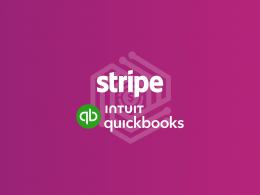Depreciation is a term used in accounting to describe the decrease in the value of an asset over time. When a business acquires an asset such as machinery, buildings, or equipment, they expect that these assets will lose value over time due to usage or becoming outdated. To reflect the decrease in the value of an asset, businesses use depreciation to record journal entries accurately.
In this article, we will discuss depreciation in accounting, the importance of recording it in financial statements, the need for depreciation for tax purposes, an overview of depreciation calculation methods, and how to record depreciation journal entries.
Contents:
1. Explanation of what depreciation is
2. The need for depreciation for tax purposes
3. Overview of depreciation calculation methods
- Straight-line method of depreciation
- Declining balance method of depreciation
- Sum-of-the-Years-Digits method of depreciation
4. Impact of a depreciation journal entry on accounting: financial statements
5. How to record effortlessly and accurately with Synder
Explanation of what depreciation is
As said in the introduction, depreciation is an accounting concept used to describe the decrease in the value of a fixed asset over time due to the asset being used, becoming outdated, or simply aging. Assets that are commonly subject to depreciation include buildings, machinery, equipment, vehicles, and furniture.
In accounting, depreciation is recognized as an expense that reduces the value of the asset on the balance sheet over its useful life. The useful life of an asset is the period during which it is expected to be useful to the business. For example, a building may have a useful life of 30 years, while a computer may have a useful life of five years.
Several factors can affect the depreciation of an asset, such as wear and tear, obsolescence, and market conditions. The depreciation rate may vary depending on the type of asset, the method of depreciation used, and other factors.
Recording depreciation accurately is essential for business accounting, as it accurately represents the value of their assets over time. This, in turn, helps businesses to make informed decisions about investments, expansions, and other financial activities.
The need for depreciation for tax purposes
The Internal Revenue Service (IRS) requires businesses to record depreciation expenses in their tax returns. The IRS recognizes that some assets lose value over time and, therefore, allows companies to take a tax deduction for this decrease in value. This deduction reduces the business’s taxable income, resulting in a lower tax liability.
The IRS requires businesses to use one of the approved methods for calculating depreciation, including the straight-line, declining balance, and sum-of-the-years-digits methods. Each method has its own rules and guidelines for calculating depreciation, and businesses must choose the method that suits their needs.
It is important for businesses to keep accurate records of their assets and depreciation expenses for tax purposes. The IRS may audit businesses to ensure that they are complying with the guidelines for calculating depreciation and recording depreciation expenses. Failure to comply with the guidelines can result in penalties and fines, which can be costly for businesses.
Overview of depreciation calculation methods
To record a depreciation journal entry, businesses need to calculate the depreciation expense for the asset, accounting for intangible assets alongside tangible ones. Once the annual depreciation expense has been calculated, incorporating both tangible and intangible assets, they can proceed to record the journal entry.
There are various methods that businesses can use to calculate depreciation, including the straight-line method, declining balance method, and sum-of-the-years-digits method.
Straight-line method of depreciation
The straight-line method is a commonly used method for calculating depreciation, especially for assets that have a predictable useful life. The straight-line method involves dividing the cost of an asset by its useful life to determine the annual depreciation expense.
The straight-line depreciation calculation method is relatively simple, making it easy for businesses to calculate and record depreciation. The formula for calculating straight-line depreciation is as follows:
Annual Depreciation Expense = (Cost of Asset – Salvage Value) / Useful Life
- Cost of Asset: The original cost of the asset, including all costs associated with the purchase, such as installation fees, taxes, and freight charges.
- Salvage Value: The estimated value of the asset at the end of its useful life. This value represents the residual value of the asset and is used to calculate the total depreciation expense over the useful life of the asset.
- Useful Life: The period during which the asset is expected to be useful to the business, as determined by the IRS or by the business.
One of the advantages of the straight-line method is that it is easy to understand and apply. Additionally, it provides a consistent and predictable depreciation expense over the useful life of the asset, which can be helpful for budgeting and financial forecasting.
However, the straight-line method has some limitations. For example, it assumes that the asset depreciates at a constant rate over its useful life, which may not always be the case. Additionally, it does not take into account the time value of money, which means that the depreciation expense may not reflect the actual decrease in the value of the asset over time.
Declining balance method of depreciation
The declining balance method is another method for calculating depreciation, and it is also known as the reducing balance method. This method is particularly useful for assets that are expected to lose value more quickly in their early years of use and then decline at a slower rate over their useful life.
The declining balance method calculates depreciation based on a fixed percentage rate, which is applied to the asset’s book value each year. The book value is the cost of the asset minus the accumulated depreciation. The declining balance rate is usually double the straight-line rate and is determined by dividing 100% by the useful life of the asset.
The formula for calculating depreciation using the declining balance method is as follows:
Annual Depreciation Expense = Book Value x Depreciation Rate%
- Book Value: The cost of the asset minus the accumulated depreciation.
- Depreciation Rate: A fixed percentage rate that is applied to the book value each year.
The declining balance method has some advantages over the straight-line method. It provides a higher depreciation expense in the early years of the asset’s life, which may better reflect the actual decrease in value.
However, the declining balance method may not provide a consistent and predictable depreciation expense over the useful life of the asset, and it may not accurately reflect the actual decrease in the value of the asset. Additionally, the book value may be difficult to determine accurately, which can affect the accuracy of the depreciation calculation.
Sum-of-the-Years-Digits method of depreciation
To use the SYD method, the first step is to determine the useful life of the asset, which is the number of years over which the asset is expected to be useful to the business. Next, the digits of the useful life are added together. For example, if the useful life of an asset is five years, the digits of the useful life would be 5 + 4 + 3 + 2 + 1 = 15. This sum is then used as the denominator in the depreciation calculation.
To calculate the annual depreciation expense using the SYD method, the remaining useful life of the asset is divided by the sum of the digits of the useful life. This percentage is then multiplied by the depreciable cost of the asset, which is the original cost minus the estimated salvage value.
The formula for calculating depreciation using the SYD method is as follows:
Annual Depreciation Expense = (Remaining Useful Life / Sum of the Digits) x (Cost – Salvage Value)
The SYD method of depreciation is useful because it may provide a more accurate representation of the true decrease in the value of the asset over time. However, it can be more complicated to calculate than the straight-line method and may not be appropriate for all types of assets.
In addition to the methods discussed above, there are other methods for calculating depreciation, such as the units of production method and the hybrid method. The units of production method calculate depreciation based on the actual usage of the asset, while the hybrid method combines two or more depreciation methods to provide a more accurate reflection of the asset’s decrease in value over time.
It is important for businesses to choose the method of depreciation that best suits their needs and to ensure that they are following the guidelines for calculating and recording depreciation expenses. This includes keeping accurate records of their assets, including their cost, useful life, and salvage value, as well as the depreciation expenses incurred over time.
Businesses should also be aware of the impact of depreciation on their financial statements and how it affects the net income and book value of their assets.
Impact of a depreciation journal entry on accounting: financial statements
The depreciation journal entry significantly impacts a business’s financial statements, affecting both the income statement and the balance sheet.
The income statement records the depreciation expense as an operating expense, reducing the net income of the business. The depreciation expense is recorded in the income statement in the period in which it is incurred, reflecting the decrease in the asset’s value during that period.
The balance sheet reflects the accumulated depreciation as a contra-asset account, which reduces the value of the asset account. The accumulated depreciation account is recorded on the balance sheet and shows the total depreciation expense incurred since the asset was acquired. The asset account is reduced by the accumulated depreciation account, reflecting the true value of the asset on the balance sheet.
For example, suppose a business has a piece of machinery with a cost of $50,000, the useful life of five years, and no salvage value. Using the straight-line method, the annual depreciation expense would be $10,000. After two years, the accumulated depreciation account would show a total depreciation expense of $20,000, and the asset account would show a book value of $30,000 ($50,000 cost minus $20,000 accumulated depreciation).
By recording depreciation accurately, businesses can provide stakeholders with accurate information about the value of their assets. This information is important for investors, creditors, and other stakeholders to make informed decisions about the business. Accurate financial statements also help businesses to comply with tax regulations and avoid penalties.
How to record effortlessly and accurately with Synder
The trick to keeping the journal entries accurate and not giving the IRS the reasons they might want to get in touch with you is to automate the process of recording the ongoing cash flow. How can you do that?
Synder provides a comprehensive solution for recording the transactions in bulk – daily summaries.
A daily summary is used for tracking business cash flow in the books, and represents a report or record that provides a snapshot of a business’s financial transactions for a given day. It is a tool used by high-transaction volume businesses to monitor their daily inflows and outflows of cash. When using a special automated tool for recording, such as Synder, the transaction details will be automatically put into the correct categories, ensuring all incomes, expenses, fees, and taxes are correctly reflected in the accounting reports.
A daily cash flow summary is useful for businesses to monitor their cash and identify any potential cash flow problems before they become critical. It can help businesses to make informed decisions about managing their cash flow, such as prioritizing payments or reducing expenses, and to take corrective action when necessary.
Learn the difference between daily summary and per transaction recording in our blog.
Overall, a daily summary for tracking business cash flow is an essential accounting tool for businesses of all sizes. It provides a clear and concise overview of the cash position of the business and helps to ensure that there is enough cash available to cover expenses and investments. By monitoring cash flow on a daily basis, businesses can make informed decisions about their operations and financial strategies and ensure their long-term financial stability and planning.
Get exclusive insights regarding daily summaries by joining Synder webinar – register now. Or create your own account to test how everything works.
Final words on what to expect from depreciation: Journal entries, asset account and more
In conclusion, accurate recording of depreciation is essential for businesses to provide accurate financial statements and tax returns. By following the guidelines for calculating depreciation and recording depreciation journal entries, businesses can ensure that their financial statements accurately reflect the true value of their assets. This, in turn, provides stakeholders with the information they need to make informed decisions about the business.

.png)




